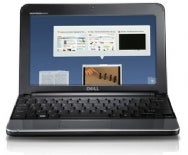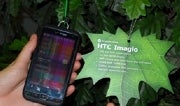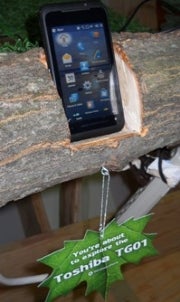We still get a pitch about a new Facebook app now and again, but truth is, that ship sailed long ago. Most Facebook apps just don't have the wow factor they once did when the platform was new. With the company's latest iPhone app update, however, the wow could be coming back on a smaller scale.
In case you missed Thursday's news, Apple finally got around to approving the third version of Facebook's iPhone app. It's a big step up from previous iterations, bringing in a number of features for which users had been clamoring.
One of the most interesting changes is how the app has been designed to feel very familiar to the iPhone user interface. For instance, no matter what you're doing on the app, you can touch anywhere on the top of the screen to go back "home." You can also save shortcuts to a friend's profile or to one of the social network's public-facing pages.
These saved items go up on 3x3 grid that can be rearranged and expanded, depending on how many pages and contacts users decide to add. This makes it much simpler to hop back and forth between certain parts of the site--that is, as long as you've planned ahead.
To go with those items are standard Facebook features, including a handful of its own first-party applications, such as events, photos, mail, and the all-important live text chat.
So is there room for third-party apps in this new ecosystem? Definitely, and much more so than would have been possible in previous versions.
Imagine, if you will, a way to sync up with applications you have installed in Facebook, then use them right inside this new iPhone app. This seems like a logical next step, though Facebook's current system for third-party developers has them build one version of their application--one that works on Facebook's site.
But Facebook could make available new application-programming interfaces, or APIs, that would let developers pipe some of that data to a mobile version too. Third-party applications could then be programmed to work within the confines of the Facebook application itself, meaning that each one could access other official features as they do on the standard site.
One of the best examples of how this works is the inter-network message system found on Facebook proper. Here you can take advantage of some of the applications you've added to expand what you can send in a message as a virtual attachment.
How great would this be on the iPhone, considering that you're unable to access many of the device's own files or view unsupported attachments? The same goes for accessing other applications within the confines of the Facebook app; ones that let you update your Twitter status, see where your friends have traveled, or play a quick round of Scrabble.
To a certain degree, Facebook already put its foot in the door with a version of its Facebook Connect service for iPhone applications. Applications that have implemented it can have their users log in with their Facebook credentials. It also can give the app access to their profile and friends list to pipe information back out. Simply making this information more readily available within the app would make inroads toward standalone apps within it.
What I'm talking about is quite different, though. These are applications within the Facebook app that would have access to other in-app Facebook apps. Would Apple be OK with this kind of functionality? Almost assuredly no. In fact, Apple has basically done the same thing with its own device and APIs--simply letting developers build specialized tools that work within its confines.
But Facebook does have a few things going for it--it's big, popular, and helps Apple sell more iPhones and iPods by being a must-have application. It has also maintained its own directory of applications for the last two years. And like Apple, what applications are able to do within the confines of the service is limited; for mobile versions of apps, those limitations could be even tighter.
What can be safely assumed is that Facebook would stand to run into the most trouble with Apple's approval process. Having apps that are installed inside an in-app marketplace means emulating what the iPhone does with its own native application store, which is a big no-no. But again, this is something Facebook could get around by limiting what applications are able to do, be it running in a Web canvas page or simply piping their data through Facebook as an intermediary.
Facebook certainly stands to gain something by keeping people inside of its application, despite the fact that there are currently no ads or paid-for features. Considering that it can never get the latter as part of Apple's rules, in-application apps that could present more ad space certainly seem like the next best thing when it comes time for Facebook to flip on that advertising switch.
 Dell has made available a customized download of Google's Chromium OS (the open-source version of Chrome OS), specifically for its popular Mini 10V netbook.
Dell has made available a customized download of Google's Chromium OS (the open-source version of Chrome OS), specifically for its popular Mini 10V netbook. Once downloaded, simply move the image onto the flash drive, plug it in-to your Mini 10V, and enjoy. It's worth noting that Dell's custom build is pre-beta and could be unstable.
Once downloaded, simply move the image onto the flash drive, plug it in-to your Mini 10V, and enjoy. It's worth noting that Dell's custom build is pre-beta and could be unstable.













